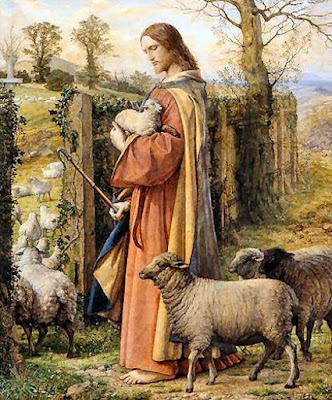Actually, casting lots was a fairly common way of making a decision. When we look back through Scripture, we come across it pretty often. It was the method used to choose the scapegoat (Leviticus 16:8); it was used to determine the priests’ duties in the temple (I Chronicles 24:5); during the terrible storm at sea, poor Jonah was determined to be the guilty one by the casting of lots (Jonah 1:7). For us, it has the unsavoury connection with the crucifixion, since it was by casting lots that the soldiers divided our Lord’s clothing (St. Matthew 27:35). In the case of choosing a replacement for Judas, it was settled in this way because of the very fact that both candidates were equally good. Casting lots was done in different ways, but a common way of doing it was to put the necessary number of polished stones of different colour in a container, and to shake it until one stone fell out, determining the choice. Whatever we might think of the method, it certainly worked. St. Matthias proved to be such a good apostle that after spreading the Gospel in Cappadocia (modern-day Turkey), Egypt and Ethiopia, he was so successful he ended up being martyred for his efforts.
There are plenty of things we can get out of the account of the choosing of Matthias, but I like the thought that the dignity of apostleship seemed to hang by the thread of chance – and yet it wasn’t really chance, was it? God had His plan all worked out, and Peter (along with the others) knew that. They could have pushed their own human will and agenda into the situation: (“Hey, that Joseph Barsabbas is a really nice guy. Let’s choose him!”). In fact, the very fact that Christ’s original choice for that particular seat in the College of Apostles didn’t work out – at least by human standards – shows that God is very much in control of every detail. I mean, would we have planned things that way? The betrayal by Judas which led to the sacrifice which has atoned for man’s sin wouldn’t have been at the top of my list for a good plan. Finding an apostolic replacement by shaking some stones in a container isn’t something I would have thought of.
It seems like we’re rarely prepared for the twists and turns which define God’s plan, and yet that’s the way He works. Why are we surprised when things don’t follow the meticulous plan we’ve worked out in our own minds? After all, even our Lord Jesus Christ Himself prayed in Gethsemane, “Nevertheless, not My Will, but Thine be done.” And isn’t it our universal experience that, in the end, God’s plan is always best? Quite so.
O Almighty God, who into the place of Judas didst choose thy faithful servant Saint Matthias to be of the number of the Twelve: Grant that thy Church, being delivered from false apostles, may always be ordered and guided by faithful and true pastors; through Jesus Christ our Lord, who liveth and reigneth with thee, in the unity of the Holy Spirit, one God, now and for ever. Amen.
_____________________________________
Pictured: "St. Matthias" by Jusepe de Ribera (1591–1652)














.jpg)